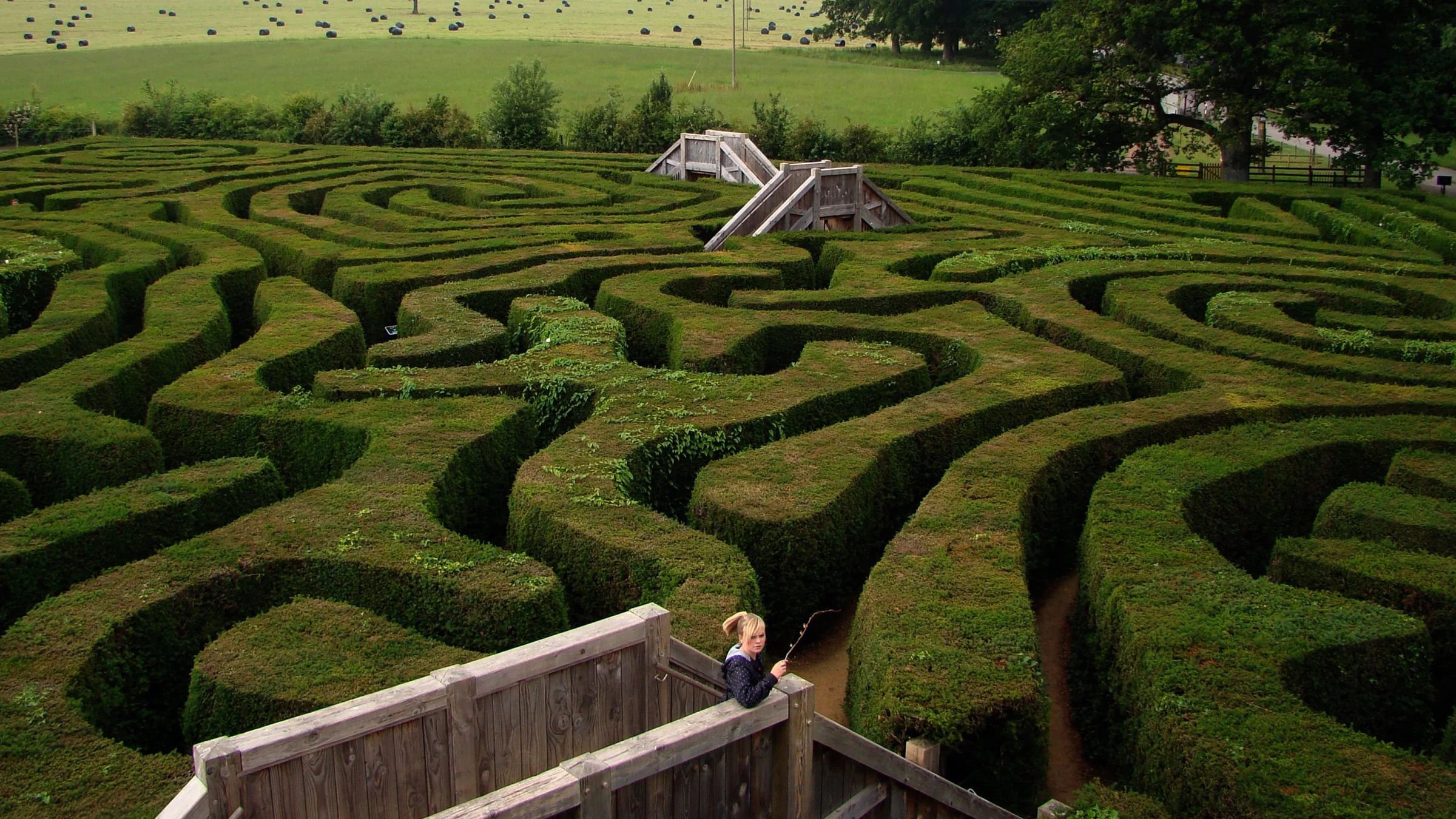Lost in labyrinths and mazes have been around forever, popping up in different cultures and times. From the Egyptians creating the first labyrinth to the Nazca people’s winding geoglyphs in Peru, these twisting paths have always fascinated us. I stumbled upon this maze craze for a unique reason: I’m always lost.
Lost in Labyrinths: The History of Maze Madness

Labyrinths aren’t just for getting lost; they hold a special place in history. The first recorded labyrinth, dating back to 19th century B.C., was built by Egyptians. They weren’t constructing it for fun – it housed the sepulcher of kings and crocodiles! Meanwhile, in Peru, the Nazca people made geoglyphs shaped like birds and monkeys, thought to be walked by gods and spirits. The Baltic Sea boasts rock-lined labyrinths from the Bronze Age, believed to trap evil spirits during spring pagan dances.
Lost in Labyrinths: Seeking Different Paths
Not everyone enters these winding paths for the same reasons. Some find spiritual solace in the unicursal labyrinths that wind to the center. Pilgrims at Chartres Cathedral in France have been doing it for a thousand years. On the other hand, mazes, with their forks and dead ends, draw hedonistic explorers seeking beauty. Hampton Court Palace’s hedge maze, planted in 1690, attracts 330,000 visitors yearly.
Lost in Labyrinths: My Maze Mission
I have a unique reason for venturing into mazes and labyrinths – I’m a perpetual student of my own bewilderment. Since 2007, after an accident left me with temporary amnesia and a daily dose of confusion, I’ve been wandering through life without a reliable sense of direction.
The Turning Point
It all started in 2007 when an accident and brain injury left me with a puzzling problem. After making four turns around the block, I found myself utterly perplexed. Where had I come from? Should I turn left or right? Even something as simple as navigating the neighborhood became a daily challenge. My husband suggested a visit to the doctor, but for some reason, it didn’t feel like an emergency – and, to be honest, we were both uninsured.
Finding Comfort in the Maze
In the midst of my perpetual confusion, mazes and labyrinths became my sanctuary. Unlike others who seek spiritual enlightenment or hedonistic pleasure, I use these winding paths to understand my own sense of disorientation. Each turn and twist becomes a lesson in accepting the unknown, a comforting routine in a world that constantly confuses me.
Conclusion: Lost, but Not Alone
So, here I am, embracing the twists and turns of life in a maze. While some may explore these pathways for history, spirituality, or pleasure, I navigate them to make peace with my daily disarray. In a world that often feels like a maze itself, finding solace in the confusion is my way of turning the journey into an adventure.
